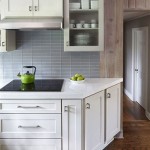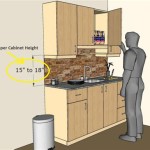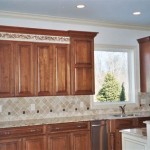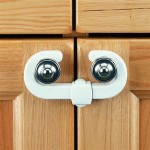Depth of Standard Kitchen Cabinets: Essential Considerations for Your Kitchen Design
When planning your kitchen, determining the depth of your standard kitchen cabinets is a crucial decision that can significantly impact the overall functionality and aesthetics of the space. Understanding the standard depths available and the factors to consider will help you make an informed choice that meets your specific needs and preferences.
Standard Kitchen Cabinet Depth Options
Standard kitchen cabinets come in three main depths:
- 12 inches: This is the shallowest depth and is typically used for wall-mounted cabinets to maximize space in smaller kitchens.
- 18 inches: This is the most common depth for base cabinets, providing ample storage space for pots, pans, and dishes.
- 24 inches: This is the deepest depth and is often used for specialized cabinets, such as pantries or appliance garages, to accommodate bulky items.
Factors to Consider When Choosing Depth
When selecting the depth of your kitchen cabinets, consider the following factors:
- Kitchen size: In smaller kitchens, shallower cabinets can help conserve space and make the room feel less cluttered.
- Storage needs: If you have a large collection of cookware and appliances, deeper cabinets will provide more storage capacity.
- Cabinets' function: Wall cabinets can be shallower to allow for more countertop space, while base cabinets need to be deep enough to accommodate larger items.
- Personal preference: Ultimately, the depth of your cabinets should fit your personal style and preferences.
Impact of Cabinet Depth on Functionality
The depth of your kitchen cabinets can affect the functionality of the space in various ways:
- Countertop space: Shallower wall cabinets provide more countertop space, ideal for preparing meals or storing small appliances.
- Storage capacity: Deeper base cabinets offer more storage space for bulky items, reducing clutter in the kitchen.
- Accessibility: Deeper cabinets can make it more difficult to reach items in the back, so consider using pull-out drawers or Lazy Susans to improve accessibility.
Tips for Optimizing Cabinet Depth
To optimize the depth of your kitchen cabinets, consider these tips:
- Mix and match depths: Use a combination of depths to create a customized storage solution that meets your specific needs.
- Utilize pull-outs: Adding pull-out shelves or drawers makes it easier to access items in deeper cabinets.
- Consider under-cabinet organizers: Installing under-cabinet organizers can provide additional storage space and keep items off the countertop.
Conclusion
Determining the depth of your standard kitchen cabinets is a crucial aspect of kitchen planning that can impact both functionality and aesthetics. By understanding the standard depths available, considering your specific needs and preferences, and utilizing tips for optimization, you can create a kitchen that is both practical and stylish.

Base Cabinet Size Chart Builders Surplus

N Standard Kitchen Dimensions Renomart

Kitchen Cabinet Sizes What Are Standard Dimensions Of Cabinets

Measure Your Kitchen Cabinets Before Designing The Layout Cabinet Dimensions Height Measurements
Guide To Kitchen Cabinet Sizes And Dimensions

Wall Cabinet Size Chart Builders Surplus

Proper Depth For Frameless Cabinets

Kitchen Cabinet Dimensions Size Guide

Get Perfect Kitchen Cabinet Measurements With These 5 Easy Steps

N Standard Kitchen Dimensions Renomart
Related Posts








